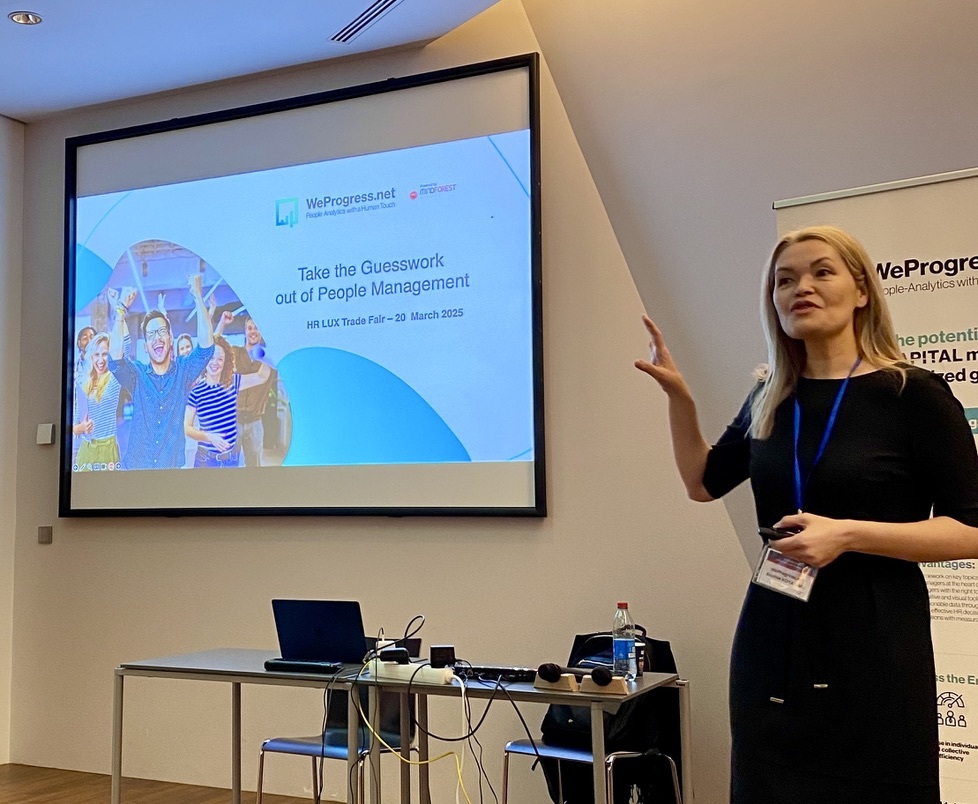Daring to Lead Positive Transformation: What are the Pillars and Benefits for your Business Success?
Downloaded 12 times
In the course of the coming months, MindForest will publish a series of articles on the subject of Positive Transformation
What if you transformed Challenge into Opportunity? Leading Positive Transformation in uncertain times
Imagine shifting from merely surviving change to seizing it as a positive opportunity. In today’s landscape, marked by relentless uncertainty, discussions around transformation often focus on the looming threat of perpetual chaos and the daunting complexities of resistance.
Traditional change management approaches frequently fall short, overwhelmed by escalating challenges. Against this backdrop, positive transformation emerges not just as an alternative solution but as a radical reinvention of business practices. This isn’t about making superficial adjustments to scrape by; it's a holistic approach deeply rooted in sustainability strategies that empower businesses to enhance performance.
More than this, it enriches employee well-being, contributes positively to society, and minimizes environmental impact. Why is this approach crucial for your business? Let’s explore together the foundational pillars and benefits of this transformative alternative.
The Strategic and Holistic Nature of Positive Transformation
What is Positive Transformation?
At its core, Positive Transformation is a strategic change process. It realigns your organization with positive, constructive goals by capitalizing on the psychological and emotional strengths of your teams. This transformation emphasizes the quality of work experiences and achieving organizational goals in ways that benefit all members. It fundamentally alters the workplace fabric, creating an environment where both the organization and its employees prosper together.
Consequently, Positive Transformation is about comprehensive reinvention. It involves a thorough overhaul of mission, vision, strategies, operations, and culture—going beyond mere tweaks or incremental changes. This approach aims for unprecedented performance and satisfaction levels, fostering profound, holistic change. It’s a deep, global process that yields significant, lasting improvements across your organization, extending well beyond simple adjustments or enhancements.
The Objectives of Positive Transformation: From Core to Sustainability
The primary objective of positive transformation is to instigate sustainable change across all facets of your organization. This initiative strategically bolsters economic performance while simultaneously enhancing the well-being of individuals, teams, and the environment.
The effects of positive transformation are profound and lasting, fundamentally reshaping how your organization functions and how it is viewed by both internal and external stakeholders.
This transformative approach prioritizes beneficial and enduring outcomes that extend beyond the organization itself to positively impact employees and customers. Key goals include improving workplace well-being, advancing sustainability, increasing operational efficiency and effectiveness, and enhancing social responsibility.
Positive transformation signifies a radical departure from traditional change management approaches. It disrupts existing management paradigms by requiring a strategic vision and a long-term commitment to integrating sustainable and ethical practices that benefit all stakeholders. Unlike traditional approaches that primarily address symptoms of problems, positive transformation targets a fundamental renewal of organizational culture and operational methodologies.
Positivity serves as a powerful lever in organizational success. Traditional change management often focuses on combating negative reactions like resistance to change, typically drawing lessons from past failures. However, incorporating positivity broadens the perspective by identifying mechanisms that promote ‘positive deviance’. Positive deviance refers to the practice of going beyond standard norms to achieve better results in an ethical and beneficial manner. It harnesses non-conformity to drive change, involving the adoption of atypical yet successful behaviors within an organization to facilitate positive change. This approach challenges and transforms standardized practices, encouraging genuine innovation.
Utilizing positivity in change management does more than mitigate threats—it actively promotes organizational flourishing. Researchers such as Caza and Caza (2008)[1] and Allen and McCarthy (2016),[2] and have demonstrated that positive approaches significantly enhance engagement with organizational change. Embracing a positive approach can transform traditional change management strategies by highlighting the benefits of positivity, not just in countering threats but in fostering a conducive environment for success. Positive change experiences are associated with higher rates of successful transformation, enabling organisations not only to meet challenges but also to thrive, thereby achieving sustainable growth and enhanced organisational health.
The Objectives & Benefits of Positive Transformational Change
Enhancing Resilience and Adaptability
Positive transformation equips your organization to adapt efficiently to both external and internal changes, promoting a proactive rather than reactive stance that enhances competitiveness. This approach not only strengthens organizational resilience but is also crucial for effectively managing crises. By integrating flexible structures and positive management practices, your organization bolsters its capability to anticipate and overcome unexpected challenges, ensuring a dynamic, resilient response to any situation.
Fostering Innovation and Cultivating Talent
This transformative approach drives innovation by fostering an environment that encourages calculated risk-taking and experimentation. It simultaneously enhances employee engagement and retains top talent, making the workplace more attractive and motivating. Actively involving employees in the change process strengthens their alignment with your company’s initiatives, boosting their commitment and cultivating a positive mindset across the organization.
Building a Positive Organizational Culture and effective Change Management
Positive transformation cultivates a culture that views change as an opportunity, promoting an organizational ethos that embraces and initiates change rather than fearing it. This approach encourages a leadership style that supports transparency, open communication, and employee empowerment, fostering innovation, collaboration, inclusivity, and flexibility.
Additionally, positive transformation enhances operational efficiency and team cohesion by unifying employees around common goals. This not only increases productivity and reduces staff turnover but also strengthens team cohesion during the change process, enhancing a sense of belonging and improving collaboration. By providing opportunities for autonomy and empowerment, employees are motivated to take initiatives and feel more invested in the company’s outcomes. A climate of positive change creates an environment where employees feel valued, supported, and motivated, contributing to overall organizational success.
Implementing Positive Transformation: How can this be Achieved?
Implementing positive transformation is a dynamic and complex process that requires strategic planning, commitment at all organizational levels, and a readiness to fundamentally rethink how your organization operates and interacts with its environment and stakeholders.
To successfully navigate this positive transformative journey, it’s crucial to partner with experts specialized in positive change. Engage with MindForest, leaders in guiding and supporting organizations through positive transformation. With MindForest’s expertise, your journey toward positive transformation will be well-planned, effectively managed, and optimally executed, ensuring enhanced performance and sustainable success.
Article written by Florence Delacour Le Petit
Contact us today to learn more.
Article written by Florence Delacour Le Petit
The Academy of Management Review. [2]
2. Allen, J., & McCarthy, C. (2016). The impact of positive organizational behavior: A literature review. Journal of Management and Organization Studies.
WANT TO RECEIVE OUR LATEST THOUGHT LEADERSHIP CONTENT?
Related posts
 Take the Guesswork out of People Management
Take the Guesswork out of People Management
 From processes to people: achieving quality
From processes to people: achieving quality
 Daring to lead Positive Transformation: What if Positive Emotional Capital was your key to sustainable change?
Daring to lead Positive Transformation: What if Positive Emotional Capital was your key to sustainable change?
 Why hire Change management professionals? We can do it alone!
Why hire Change management professionals? We can do it alone!
 Digital Transformation and Change Management: Lessons shared in an event hosted by Cebi and MindForest
Digital Transformation and Change Management: Lessons shared in an event hosted by Cebi and MindForest



